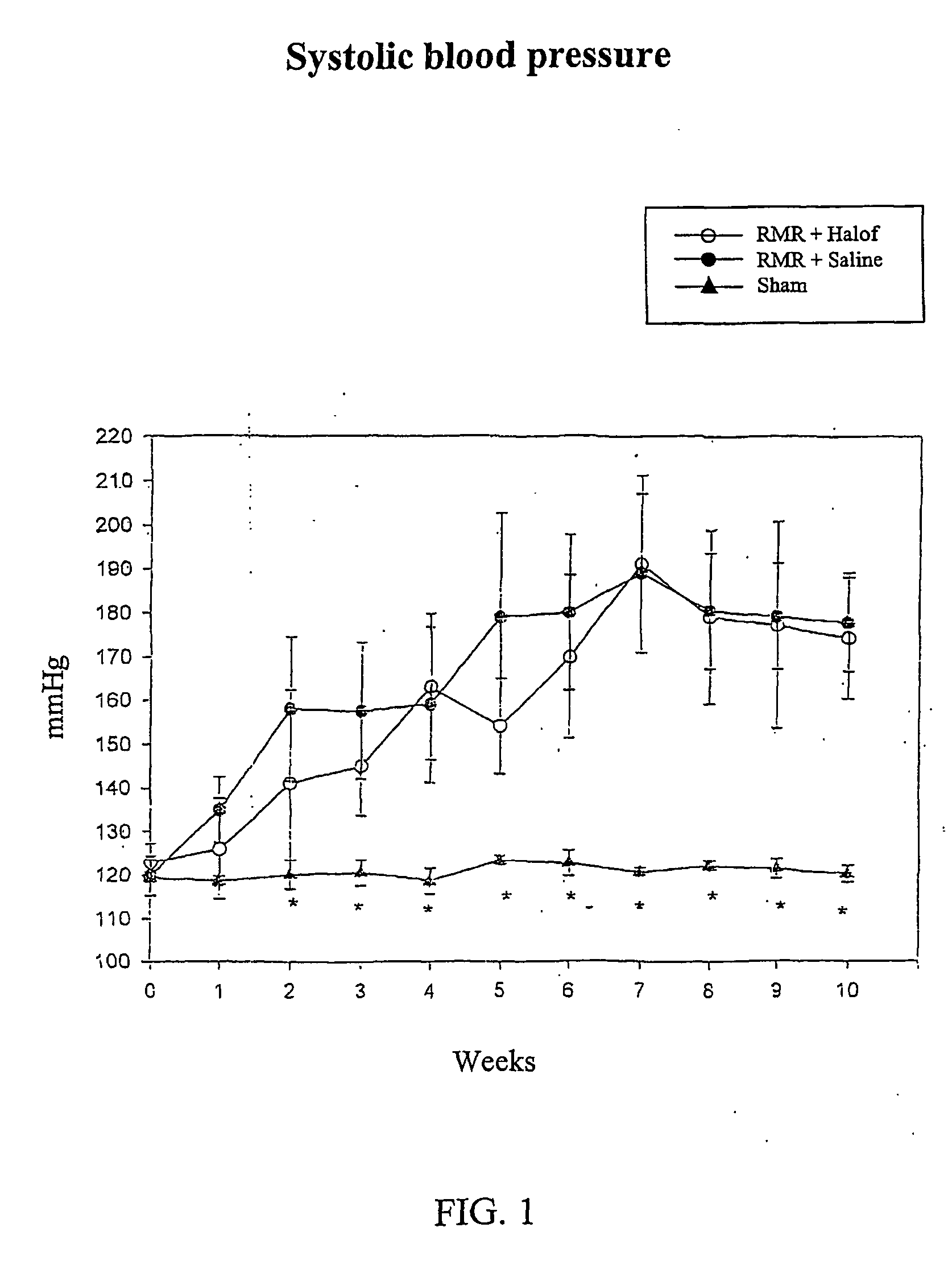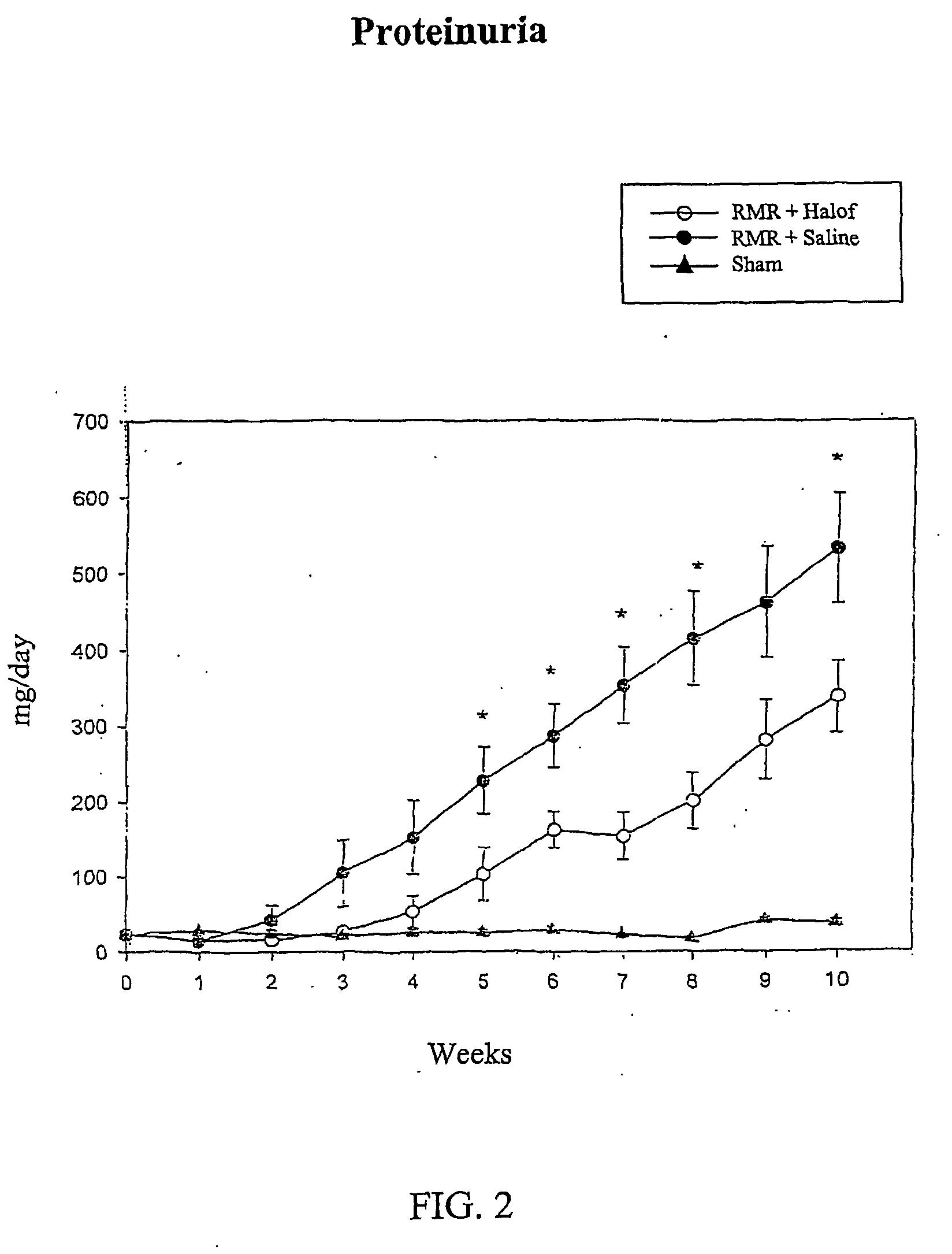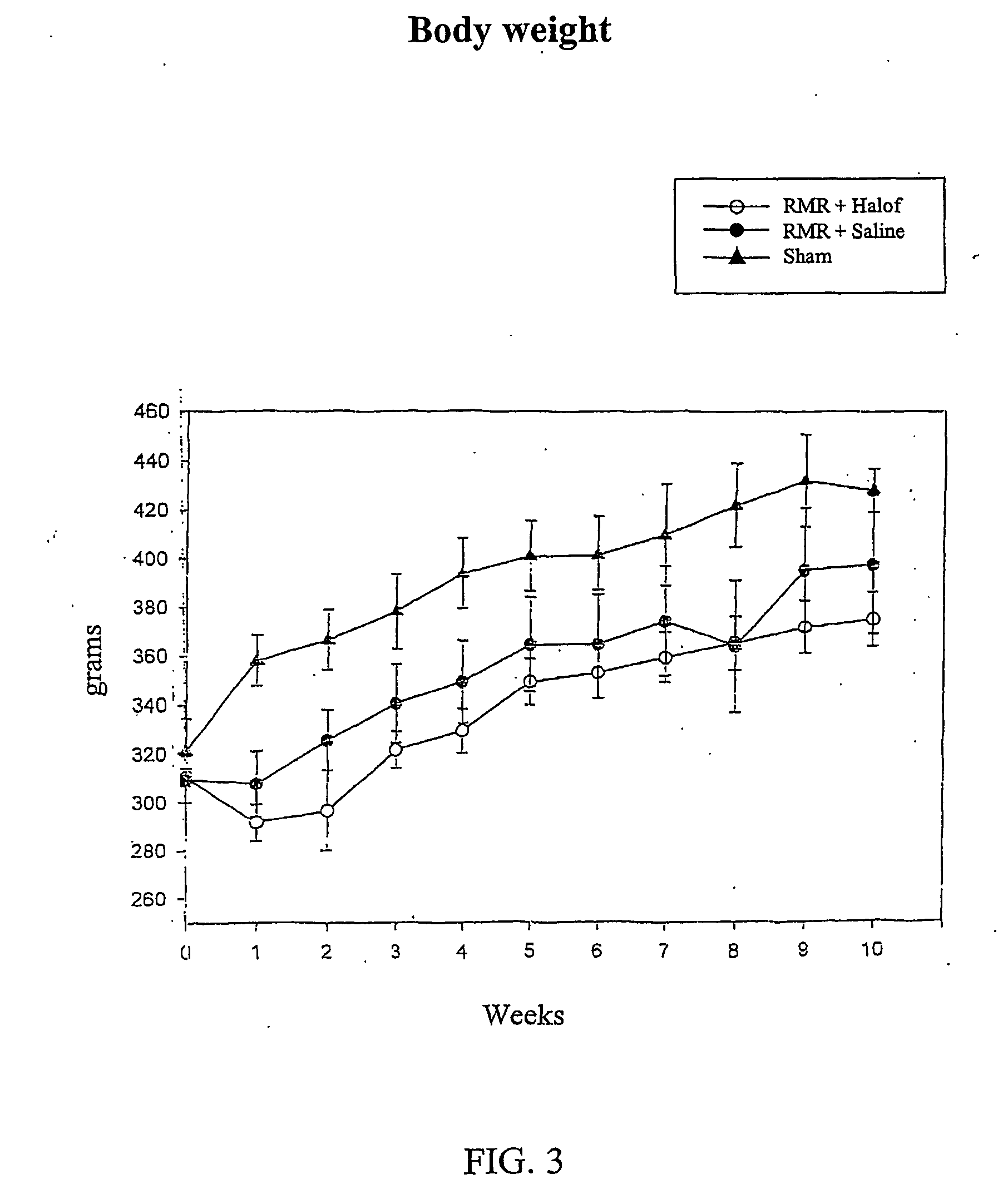Treatment for renal fibrosis
a technology of quinazolinone and fibrosis, which is applied in the field of compositions for treatment of renal fibrosis, can solve the problems of not having an increased rate of bone breakage, halofuginone cannot always predict the exact behavior of halofuginone in vivo, and cannot always be accurately predicted from in vitro studies
- Summary
- Abstract
- Description
- Claims
- Application Information
AI Technical Summary
Benefits of technology
Problems solved by technology
Method used
Image
Examples
example 1
[0067] Solution of halofuginone was prepared by dissolution of powder of halofuginone hydrobromide in aqueous media containing suitable buffer.
[0068] Male Wistar rats (weighing 300±30 g at the start of the experiment) were used in this study after being allowed to acclimatize to their environment for one week Rats were assigned to undergo renal mass reduction (RMR) by 5 / 6 nephrectomy or sham operation, under anesthesia with intraperitoneal injection of pentobarbital (35 mg / kg body weight). RMR was performed by ligature of 2 of 3 major branches of the left renal artery and right nephrectomy in the same session. Sham rats undergo exposure of the kidneys and removal of the peri-renal fat, without undergoing RMR. After 24 hours recovery of the rats were assigned to one of the following groups: [0069] 1) Group I: RMR rats, oral gavage with halofuginone 0.2 mg / kg / day started 24 hours post surgery. [0070] 2) Group II: RMR rats, oral gavage with normal saline daily, started 24 hours post s...
example 2
[0075] Male Wistar rats (weighing 30±130 g at the start of the experiment) were used in this study. They were allowed to acclimatize to their environment for one week. Rats were assigned to undergo renal mass reduction (RMR) by 5 / 6 nephrectomy or Sham operation, under anesthesia with intraperitoneal injection of pentobarbital (35 mg / kg body weight). RMR was performed by ligature of 2 of 3 major branches of the left renal artery and right nephrectomy in the same session. Sham rats have undergone exposition of the kidneys and removal of the peri-renal fat. After 24 hours recovery the rats were assigned to one of the following groups: [0076] 1) Group I: RMR rats, oral gavage with halofuginone 0.2 mg / kg / day started 24 hours post surgery. [0077] 2) Group II: RMR rats, oral gavage with normal saline daily, started 24 hours post surgery. [0078] 3) Group III: age matched, sham operated rats served as the controls.
[0079] All animals were allowed free access to a standard diet and water ad l...
example 3
Method of Treatment of Renal Fibrosis
[0084] As noted above, halofuginone has been shown to be an effective inhibitor of renal fibrosis. The following example is an illustration only of a method of treating renal fibrosis with halofuginone, and is not intended to be limiting.
[0085] The method includes the step of administering halofuginone, in a pharmaceutically acceptable carrier as described above, to a subject to be treated. Halofuginone is administered according to an effective dosing methodology, preferably until a predefined endpoint is reached, such as the absence of further progression of renal fibrosis in the subject, the inhibition of renal fibrosis or the prevention of the formation of renal fibrosis.
[0086] Halofuginone can be administered to a subject in a number of ways, which are well known in the art. Hereinafter, the term “subject” refers to a human or animal to whom halofuginone was administered. For example, administration may be done orally, or parenterally, fo...
PUM
| Property | Measurement | Unit |
|---|---|---|
| compositions | aaaaa | aaaaa |
| fibrous connective tissue | aaaaa | aaaaa |
| systolic blood pressure | aaaaa | aaaaa |
Abstract
Description
Claims
Application Information
 Login to View More
Login to View More - R&D
- Intellectual Property
- Life Sciences
- Materials
- Tech Scout
- Unparalleled Data Quality
- Higher Quality Content
- 60% Fewer Hallucinations
Browse by: Latest US Patents, China's latest patents, Technical Efficacy Thesaurus, Application Domain, Technology Topic, Popular Technical Reports.
© 2025 PatSnap. All rights reserved.Legal|Privacy policy|Modern Slavery Act Transparency Statement|Sitemap|About US| Contact US: help@patsnap.com



